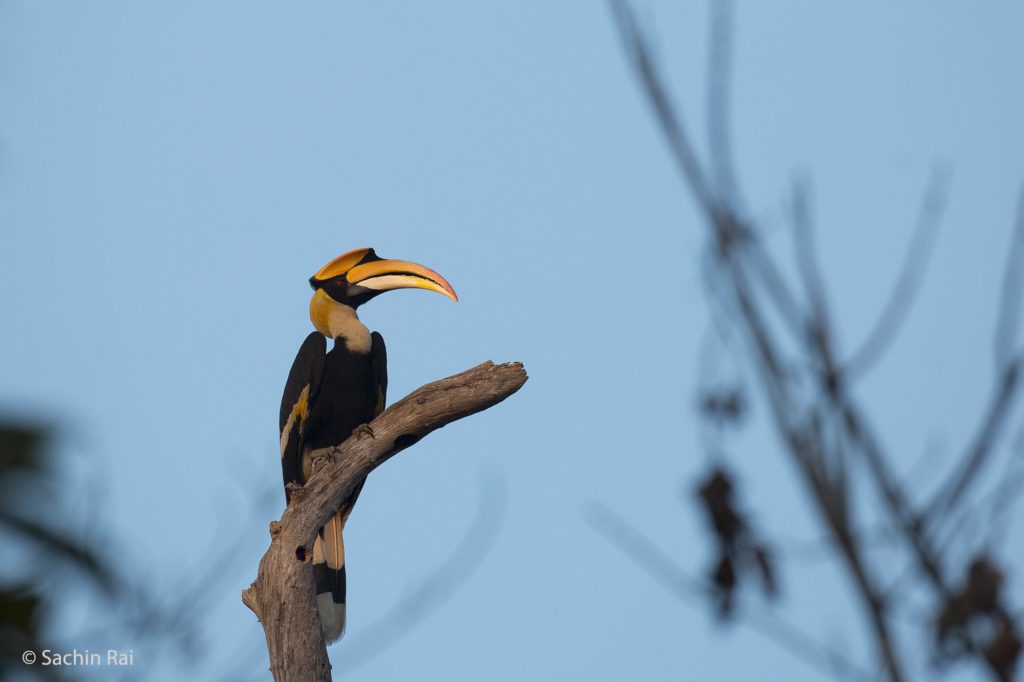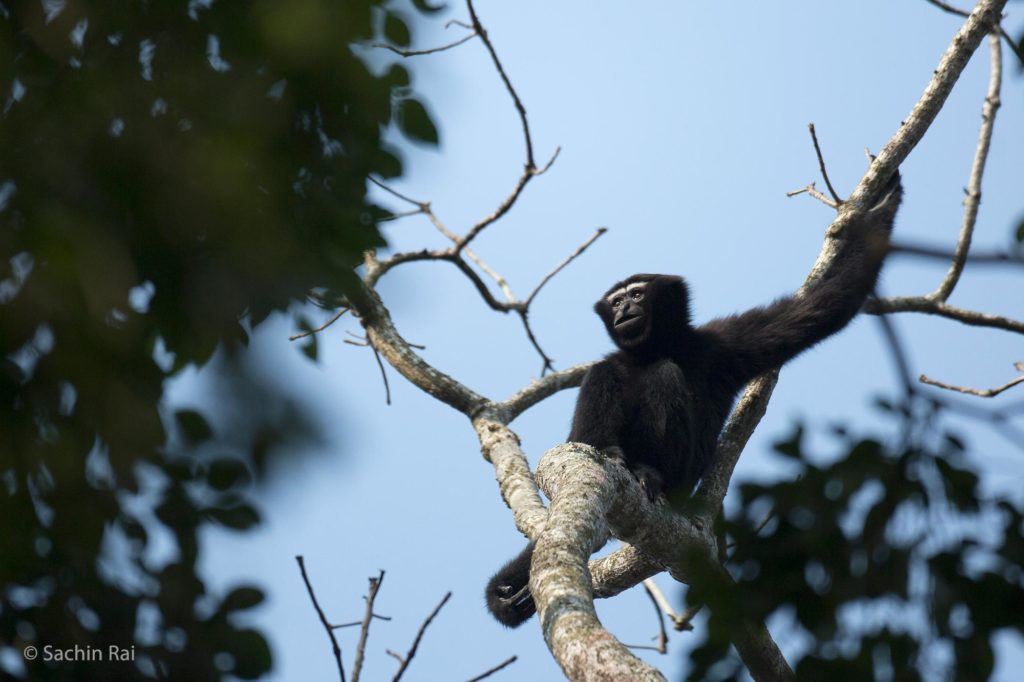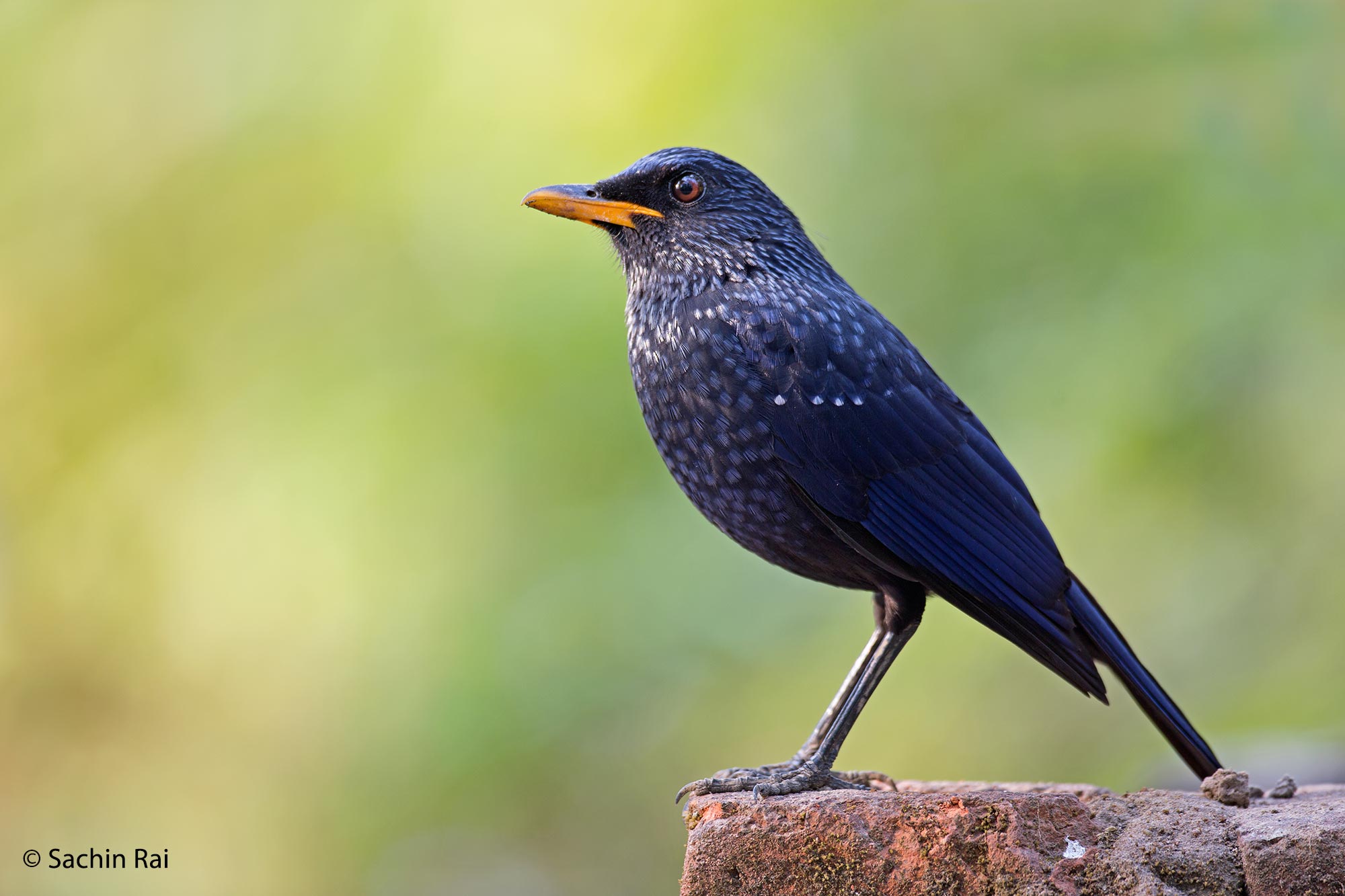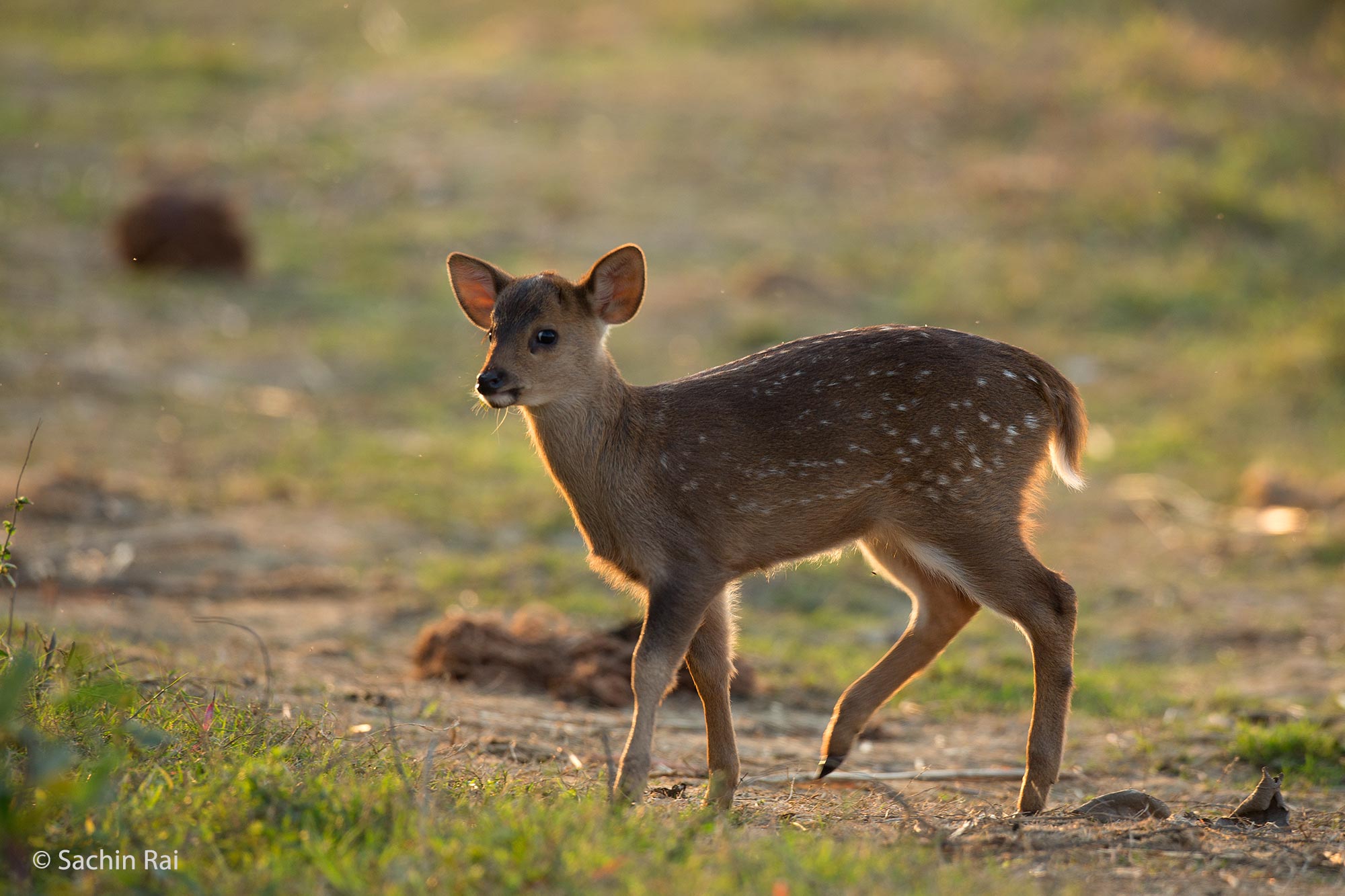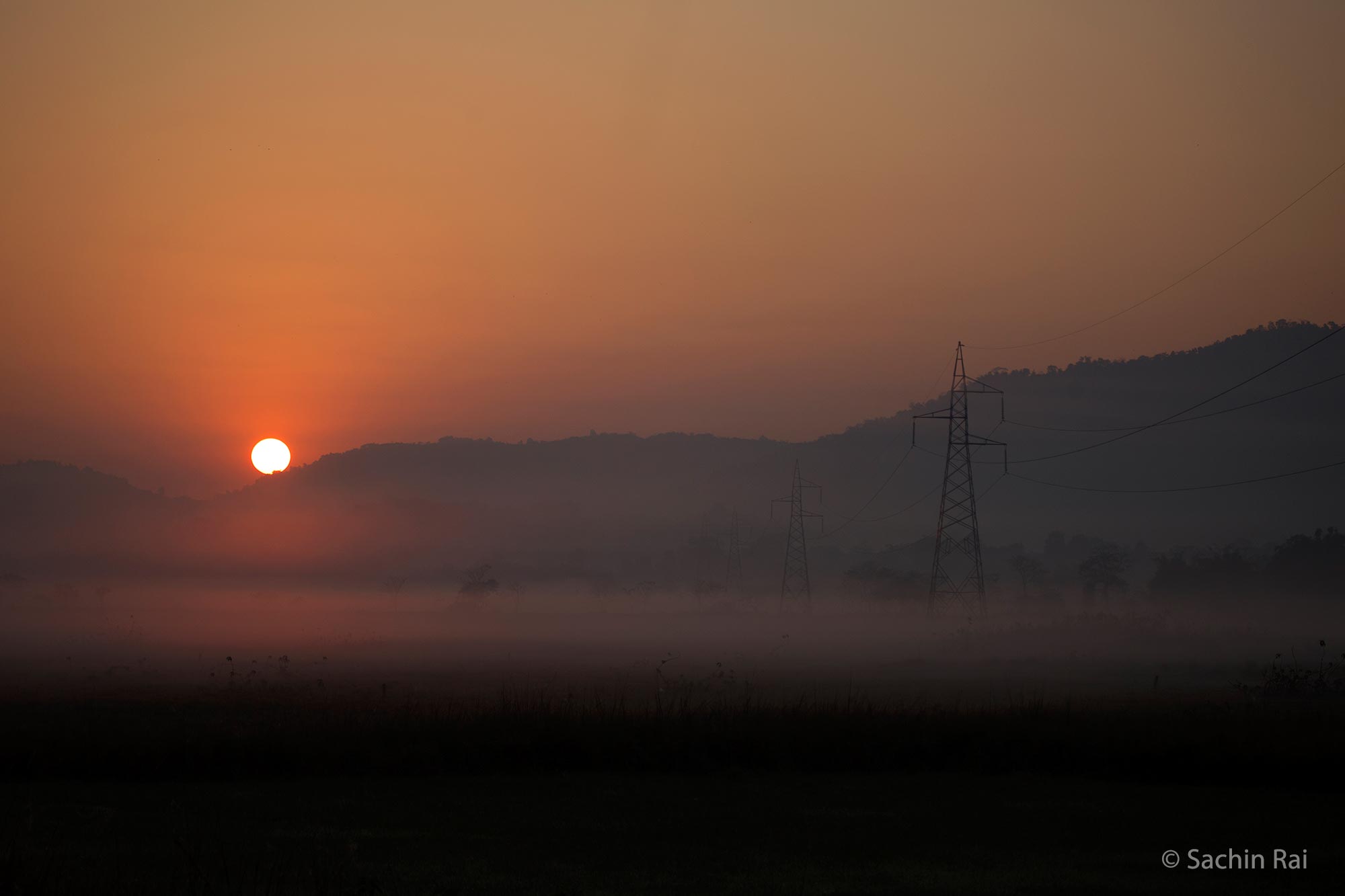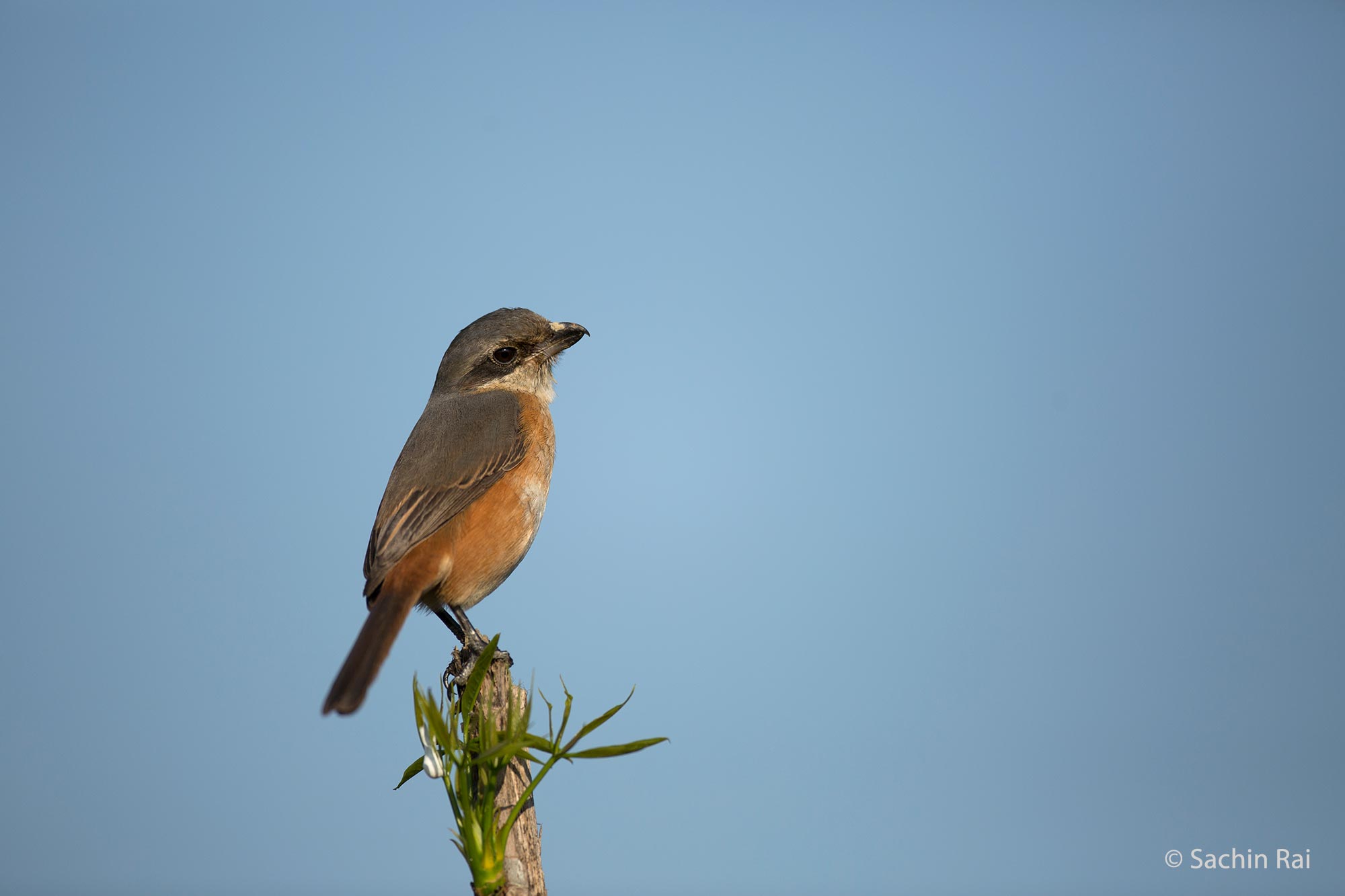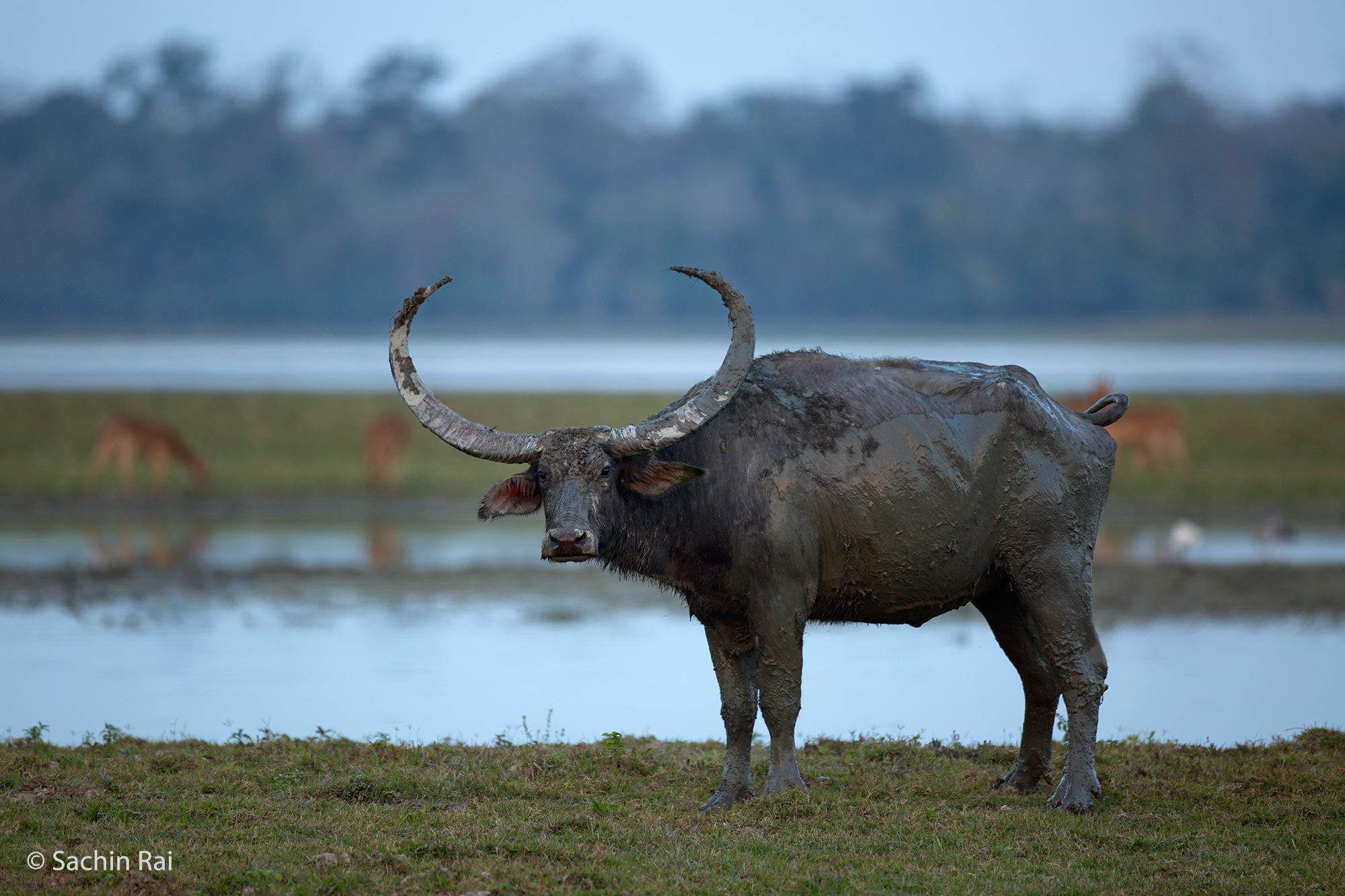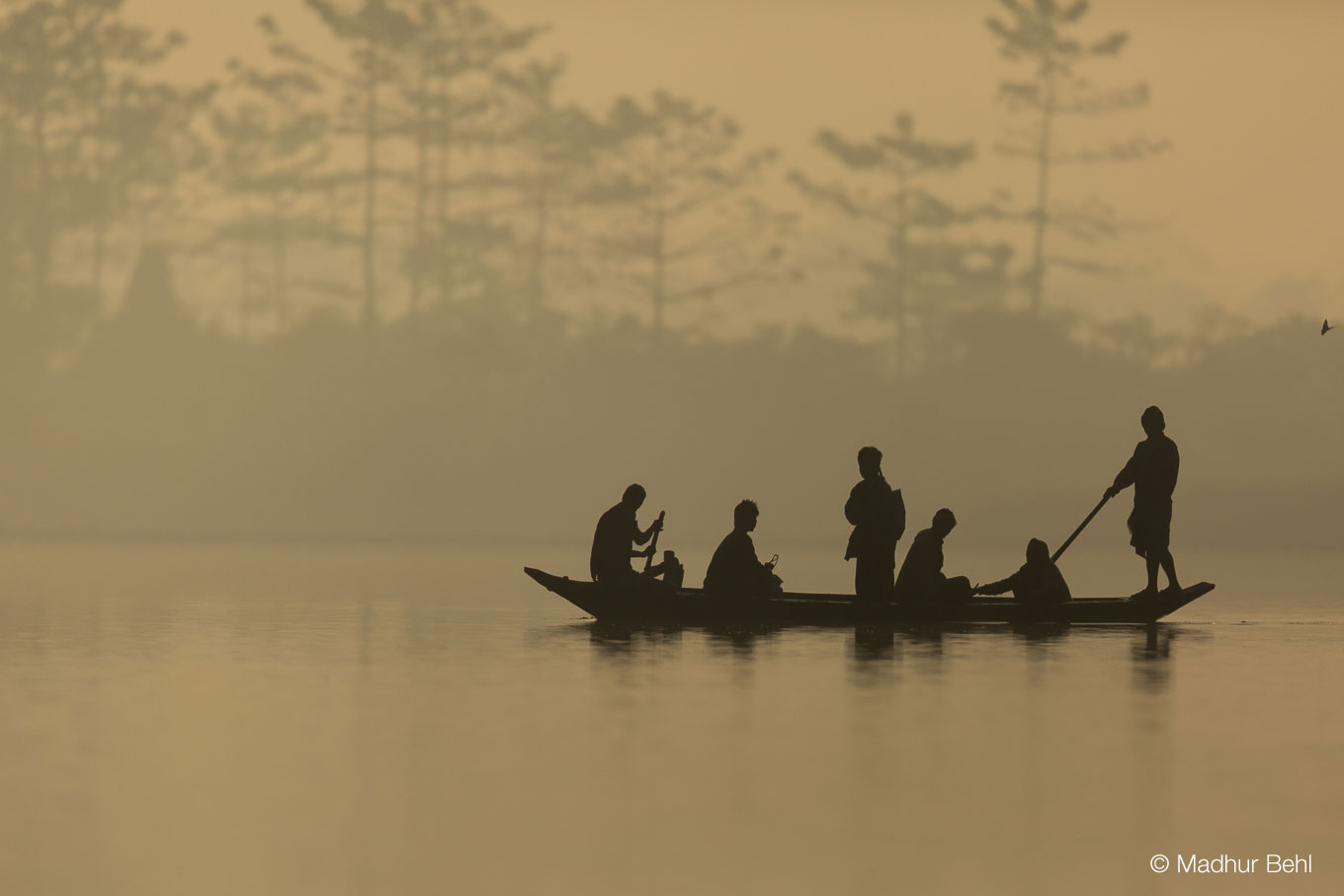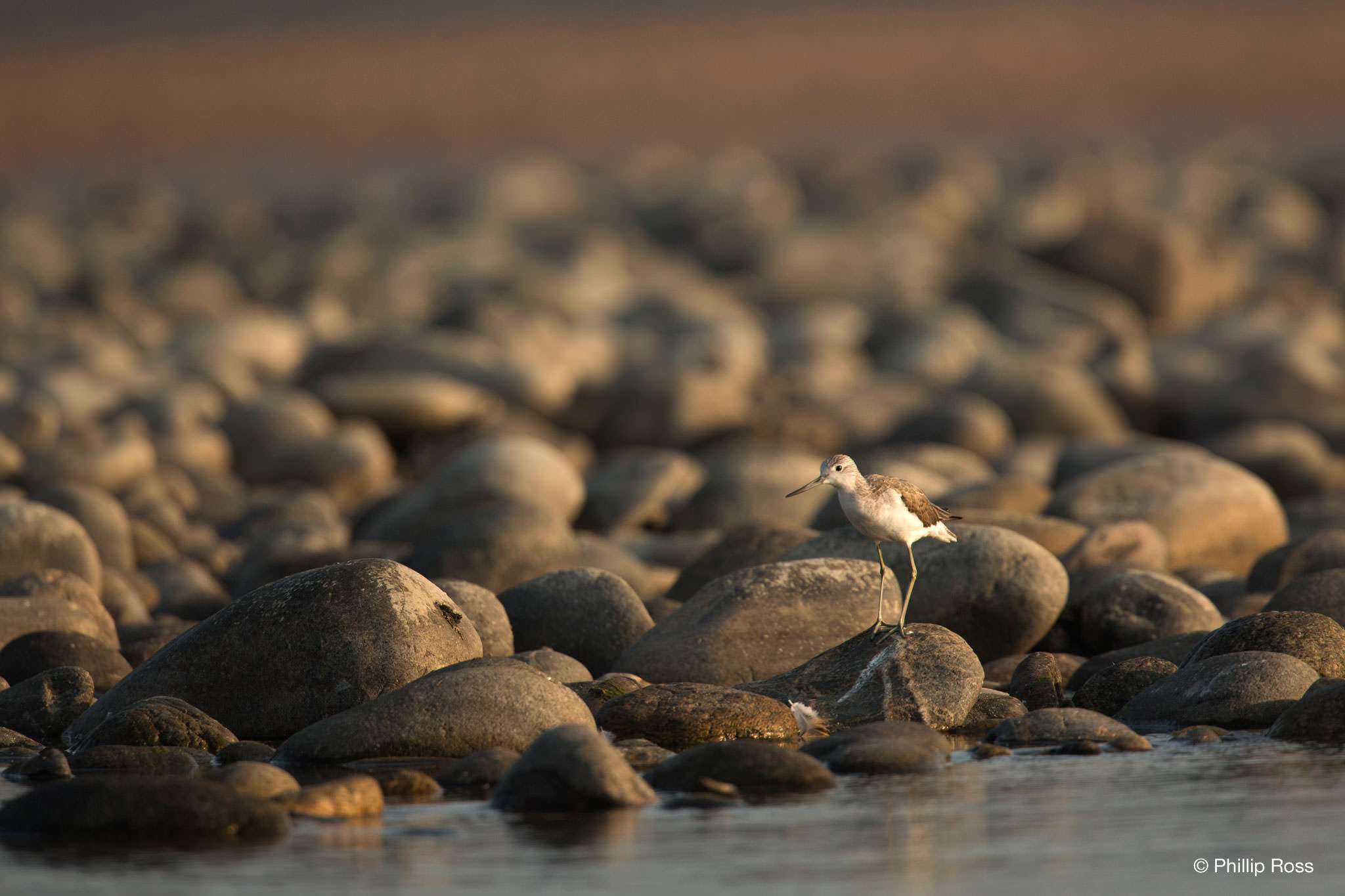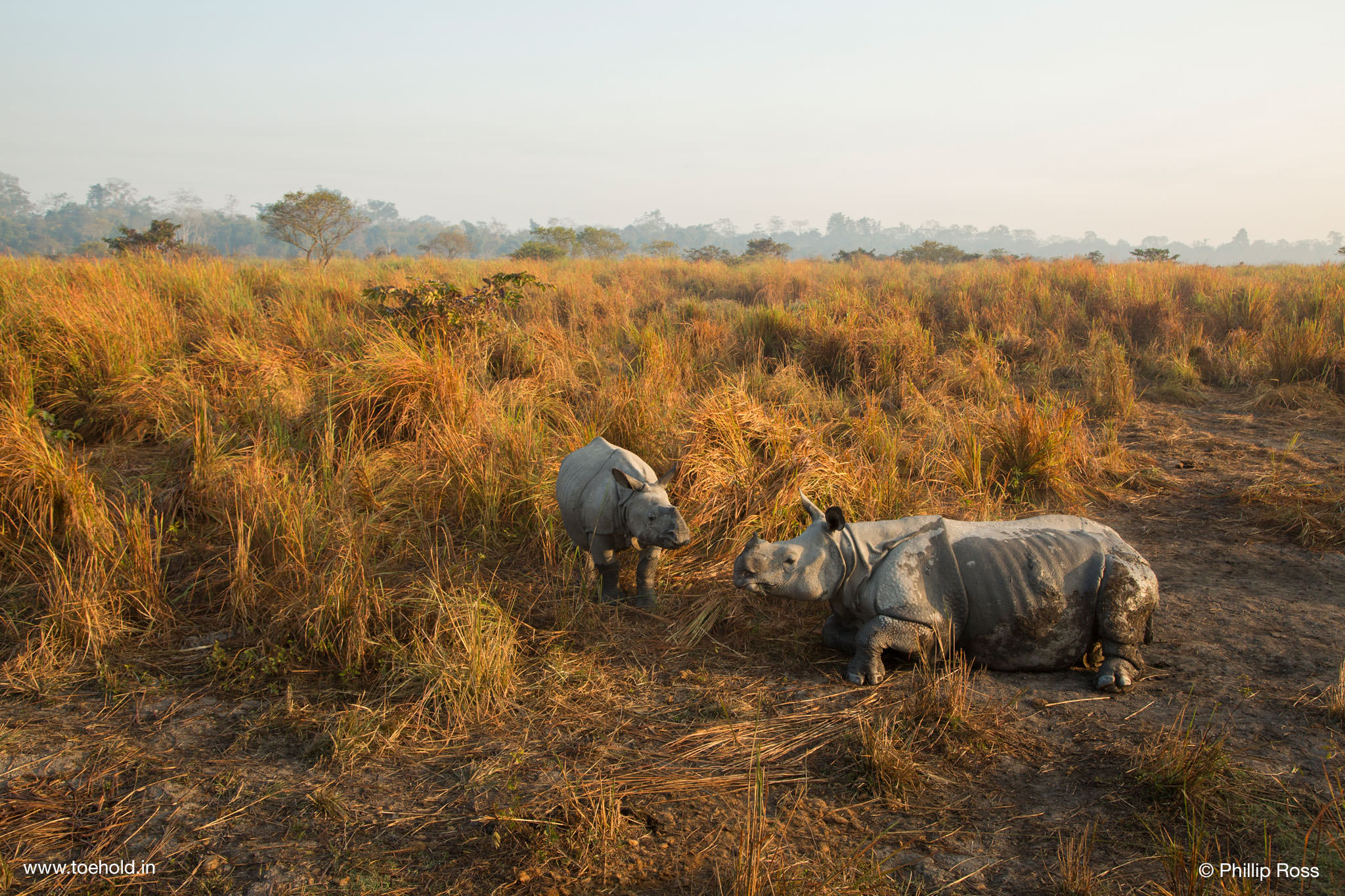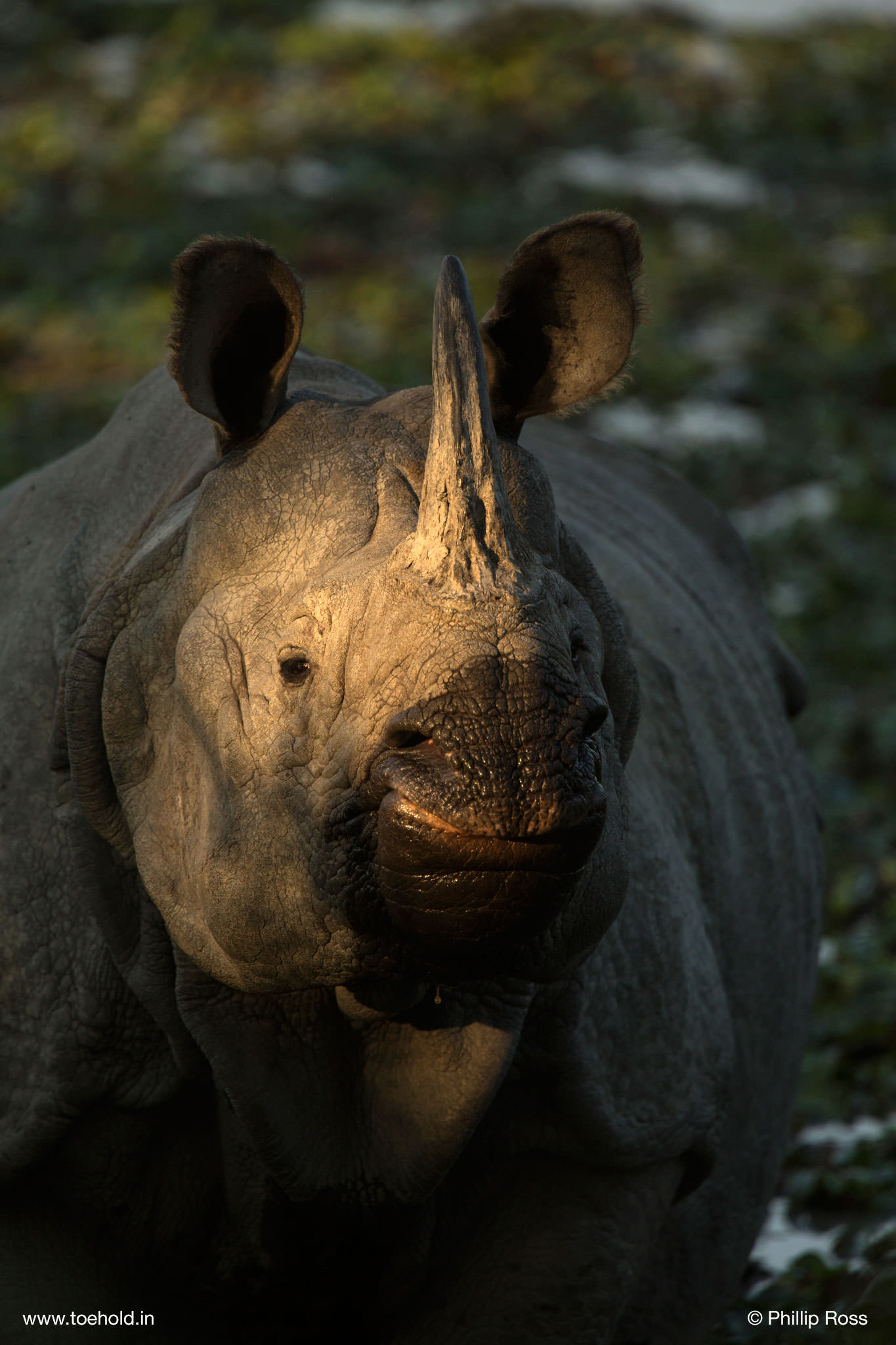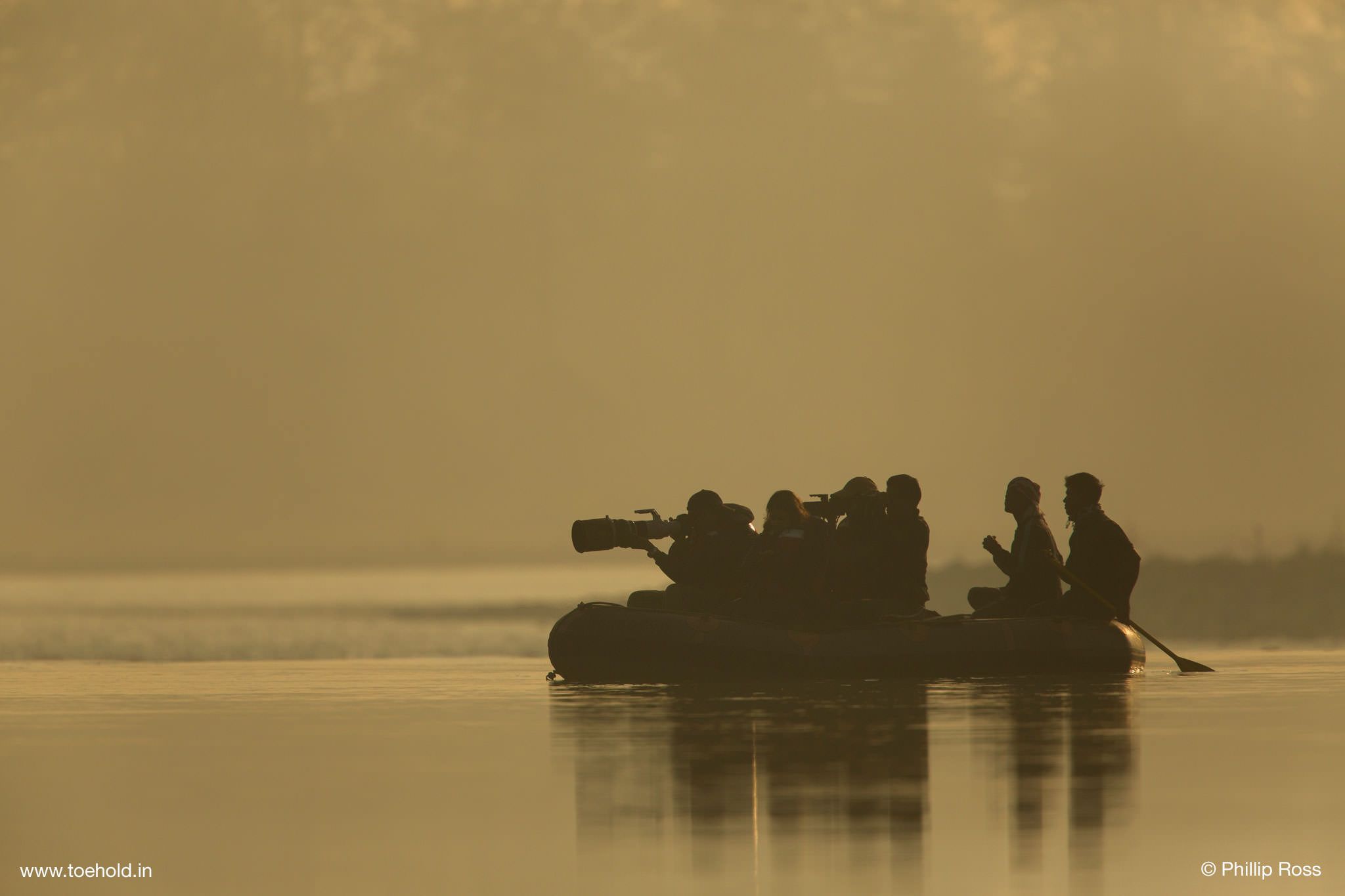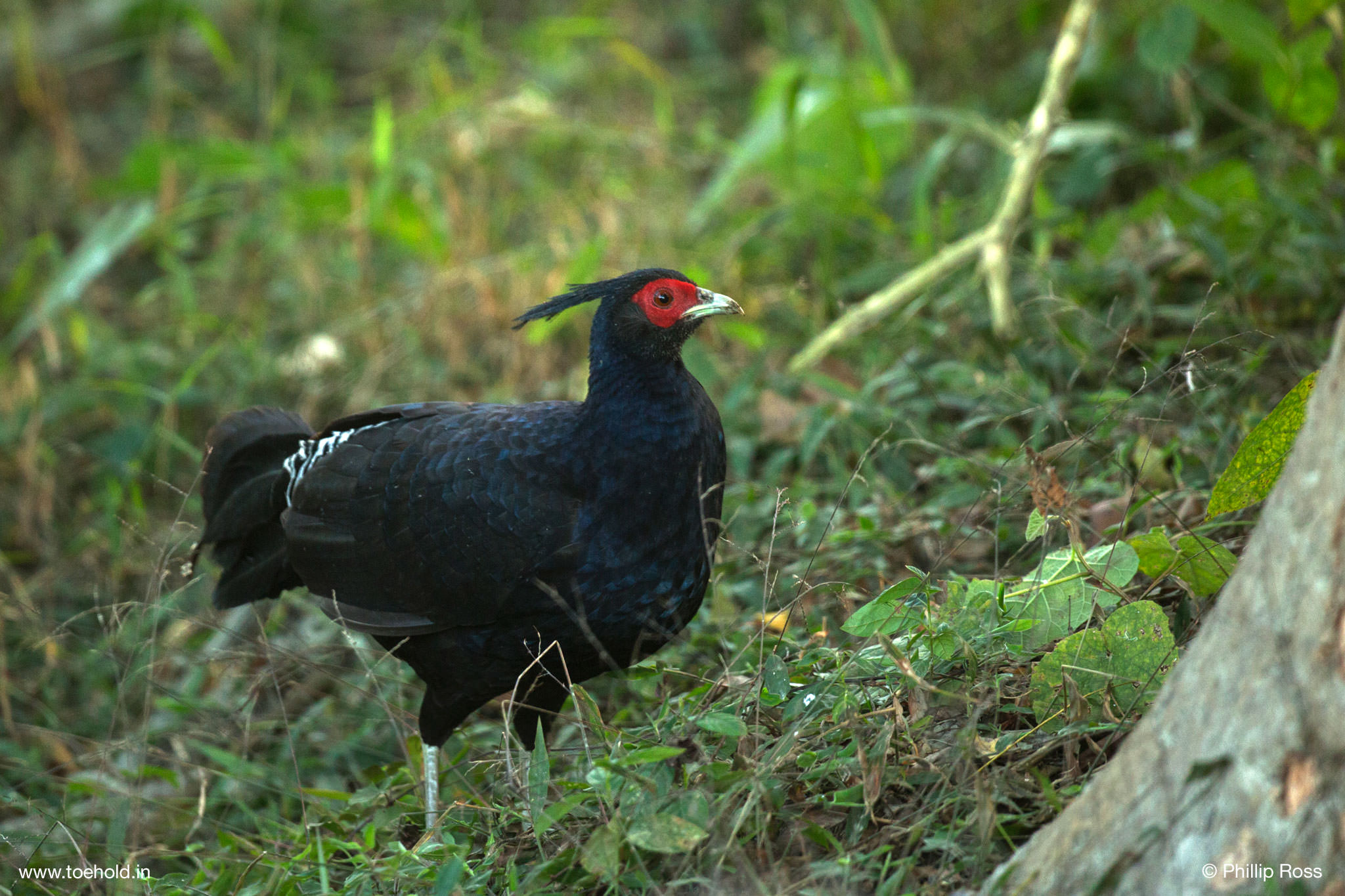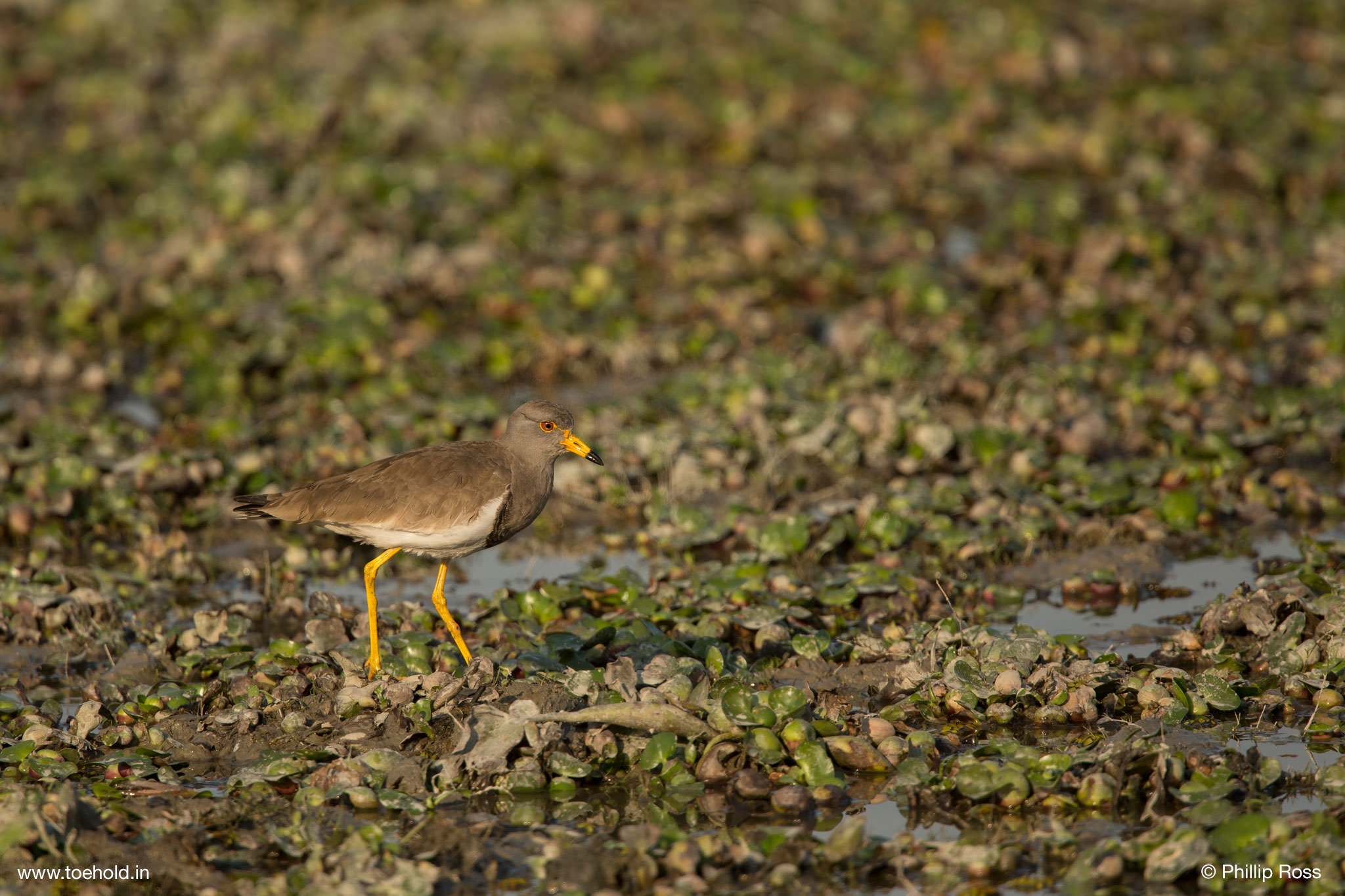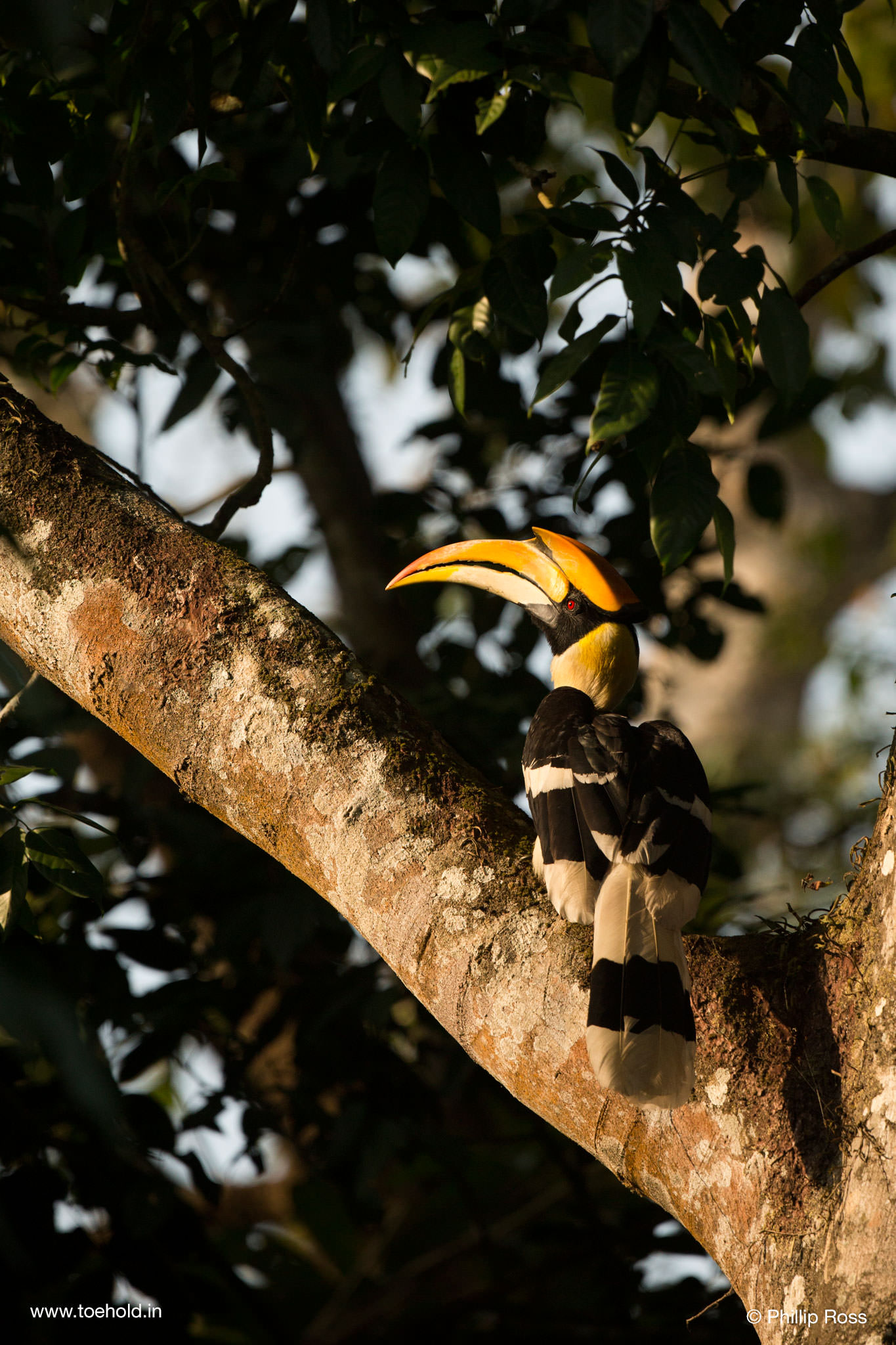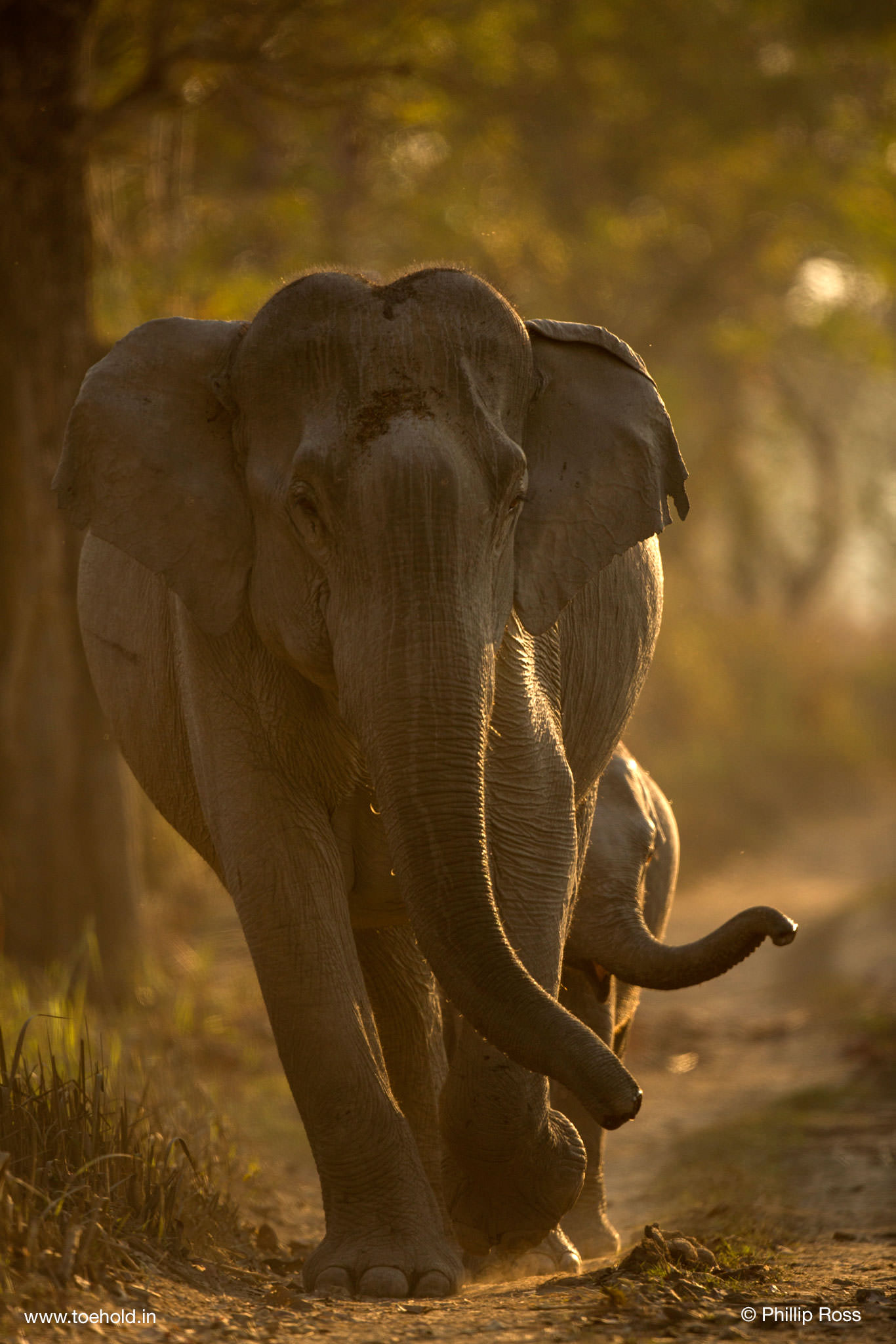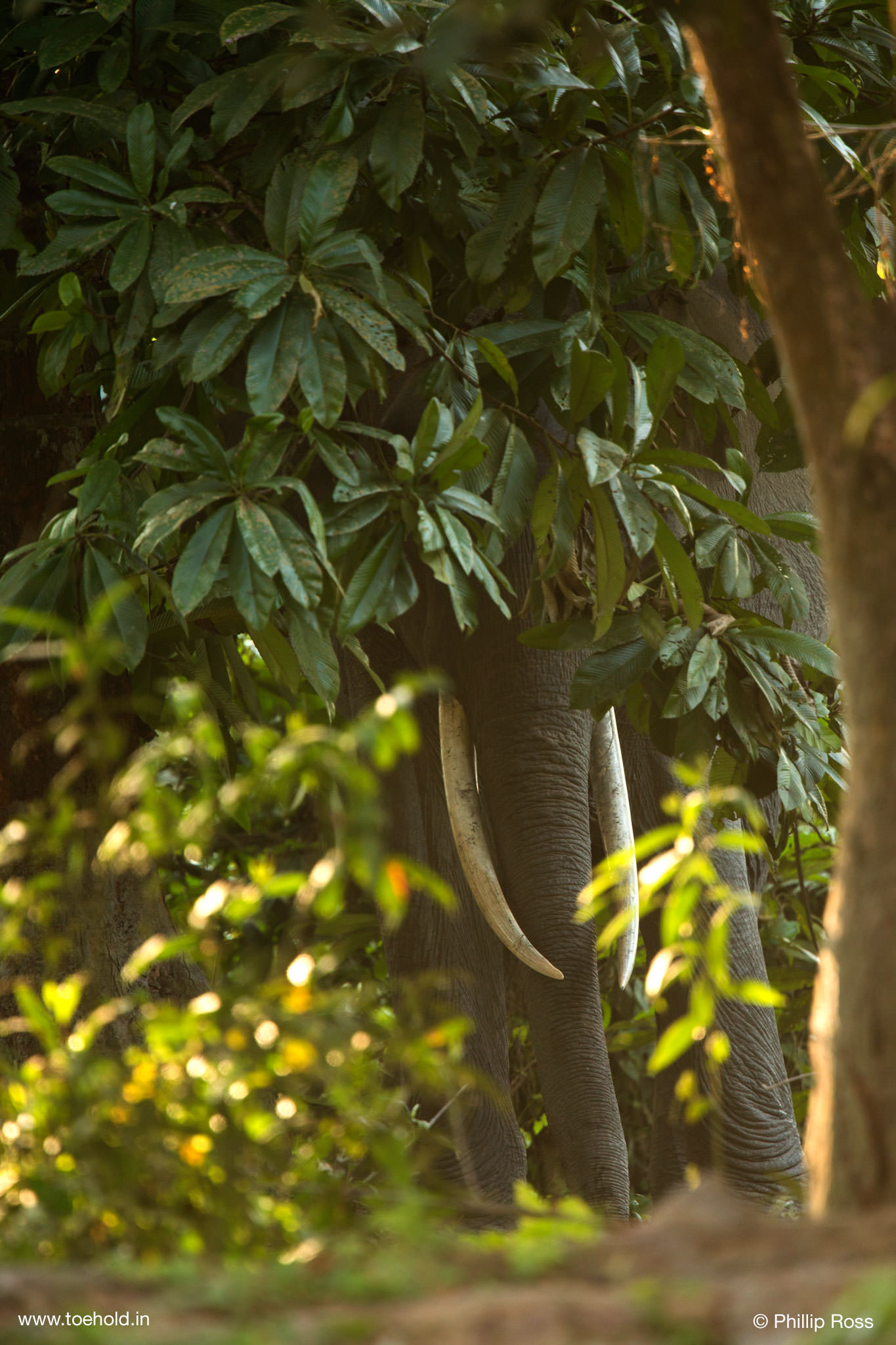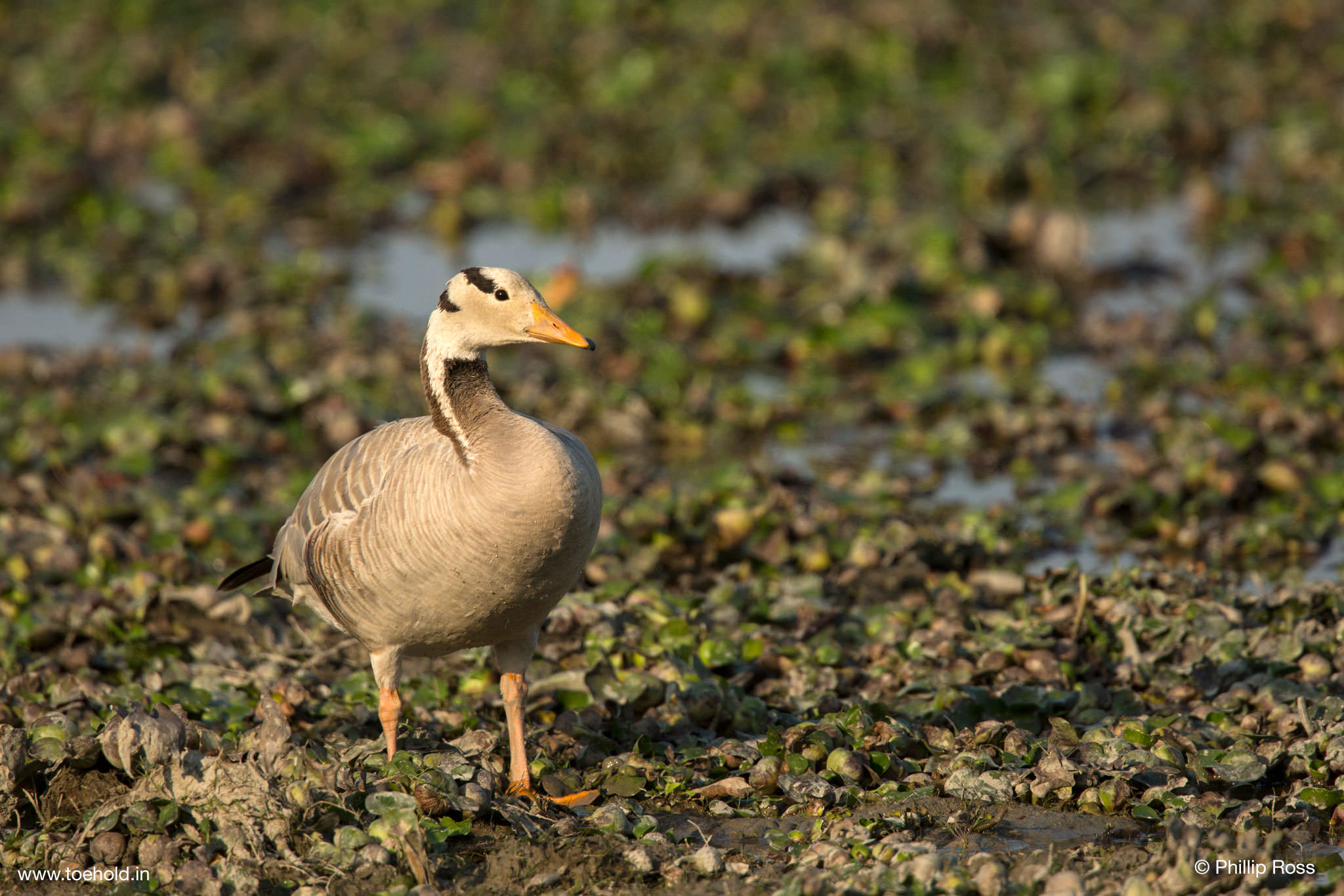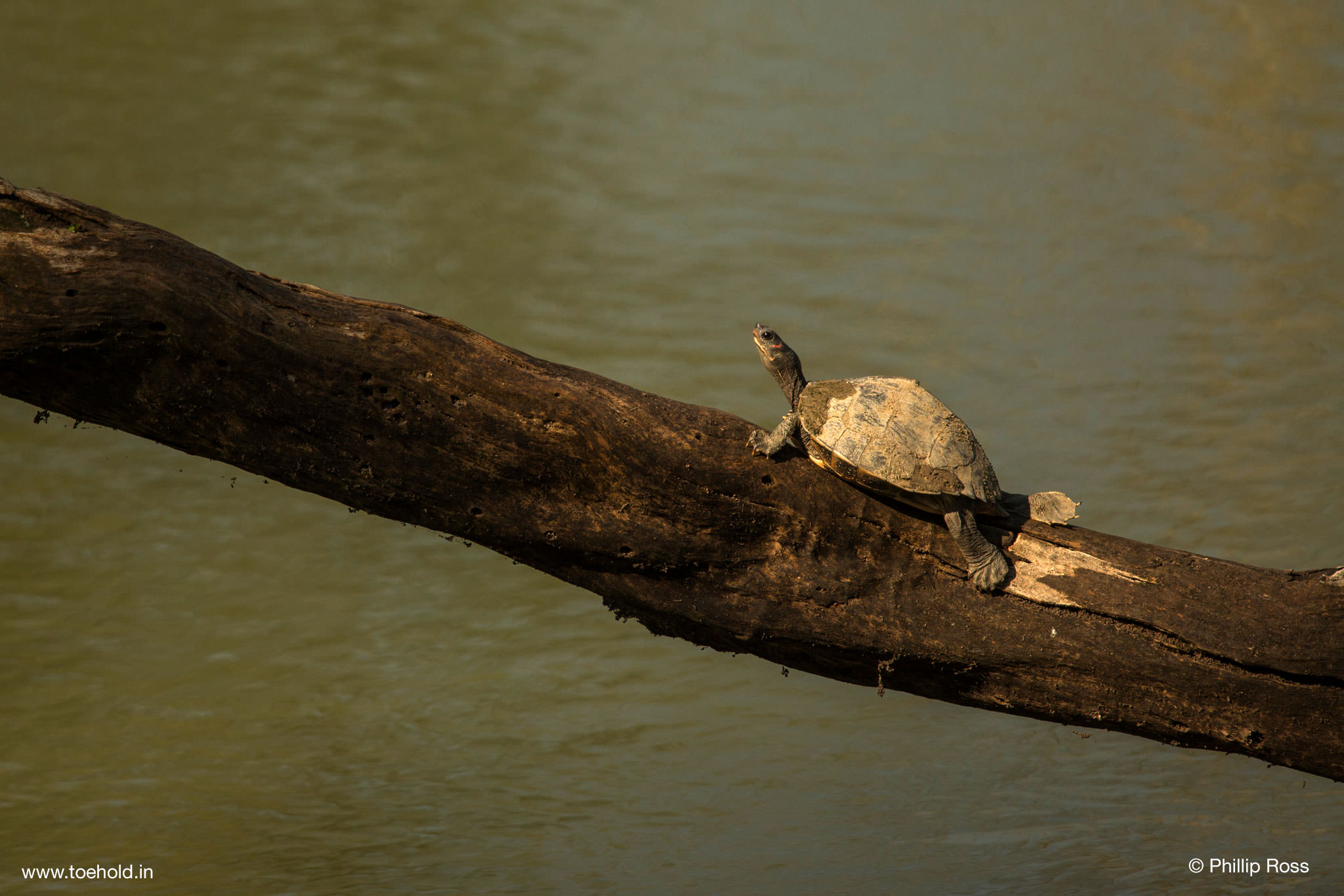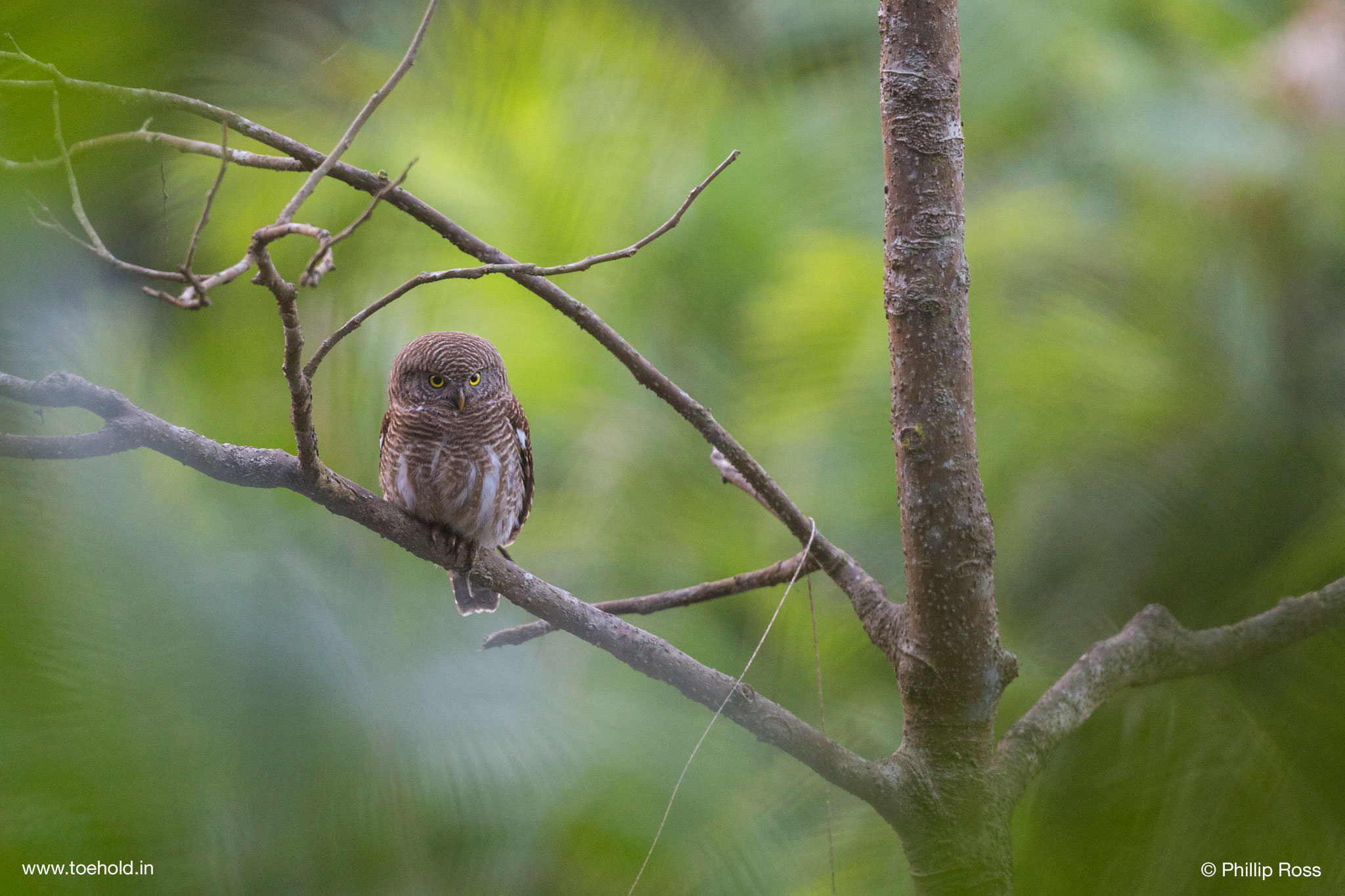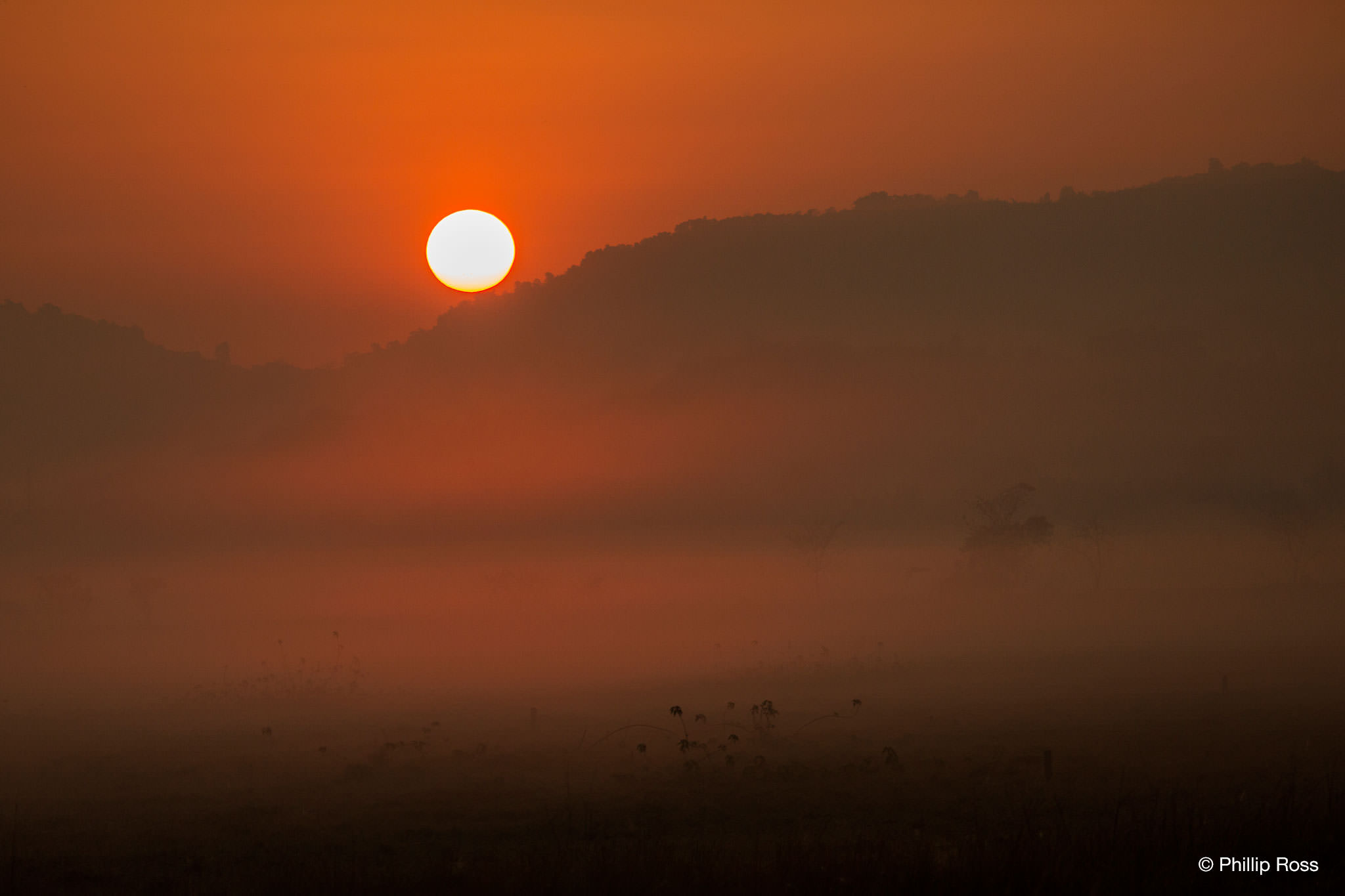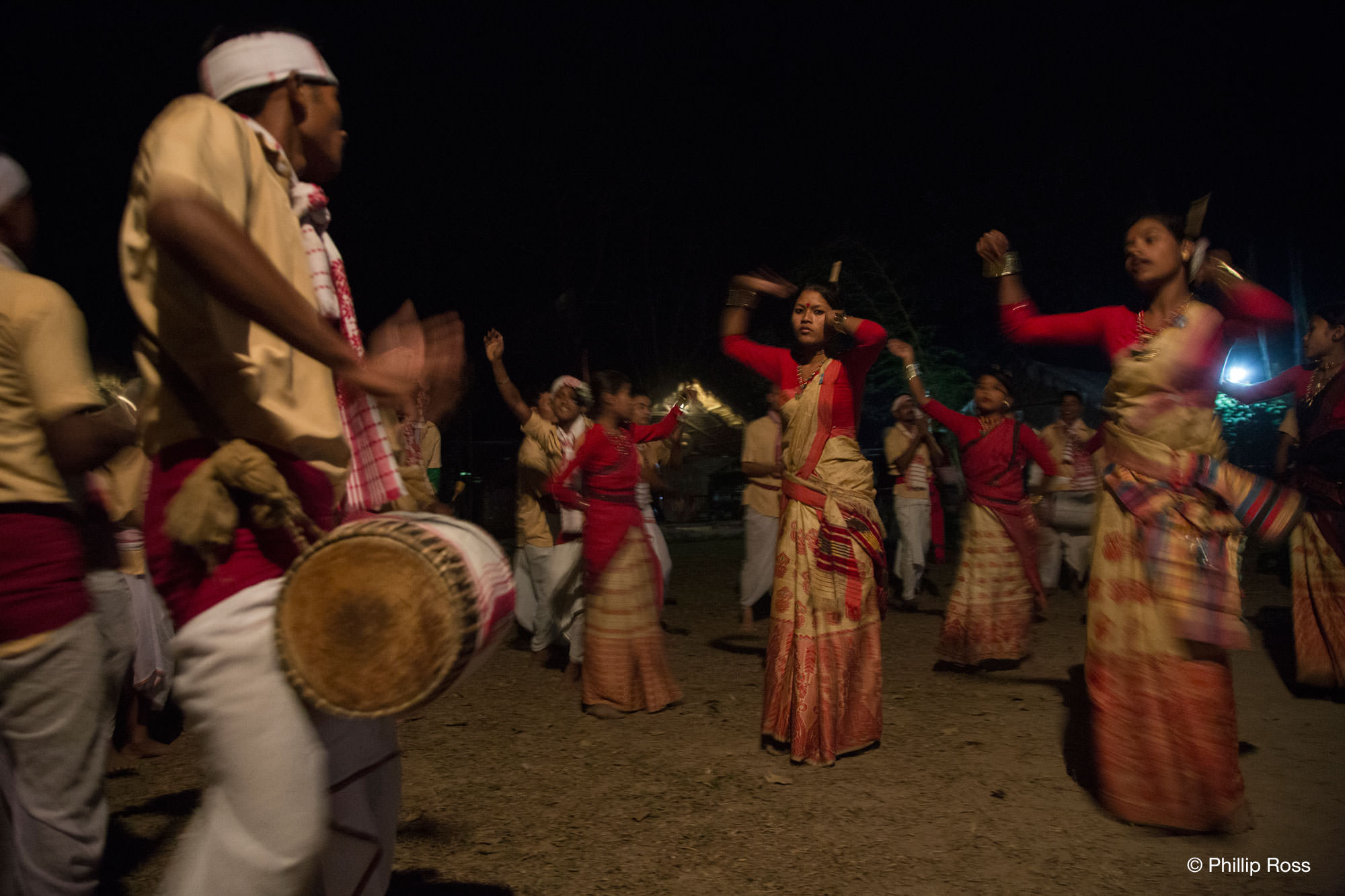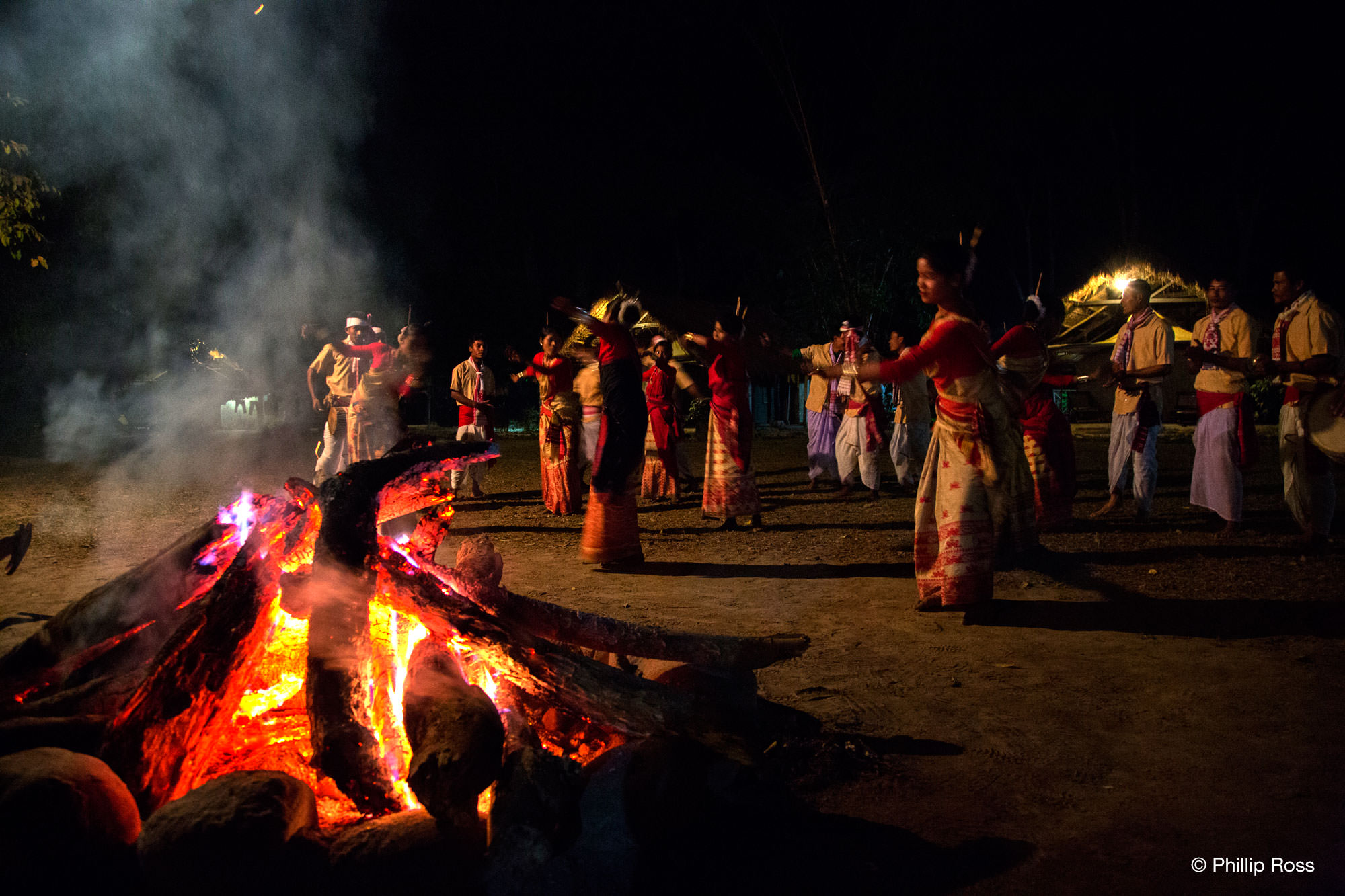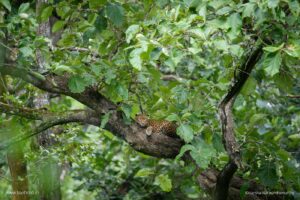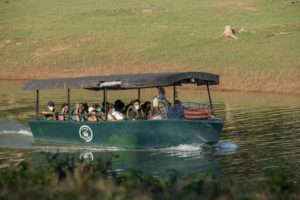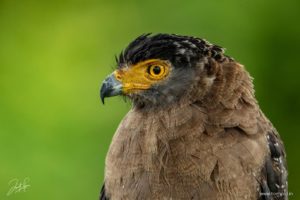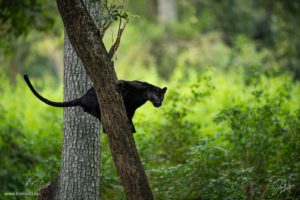It was the group’s first morning in Kaziranga, as they met at the restaurant for a piping-hot cup of the famous Assamese tea and relatively ordinary biscuits, and departed on their maiden safari in the Central Range of the Tiger Reserve.
Within minutes of entering the park, participants were treated to the first sighting of a hog deer grazing just beside the road.
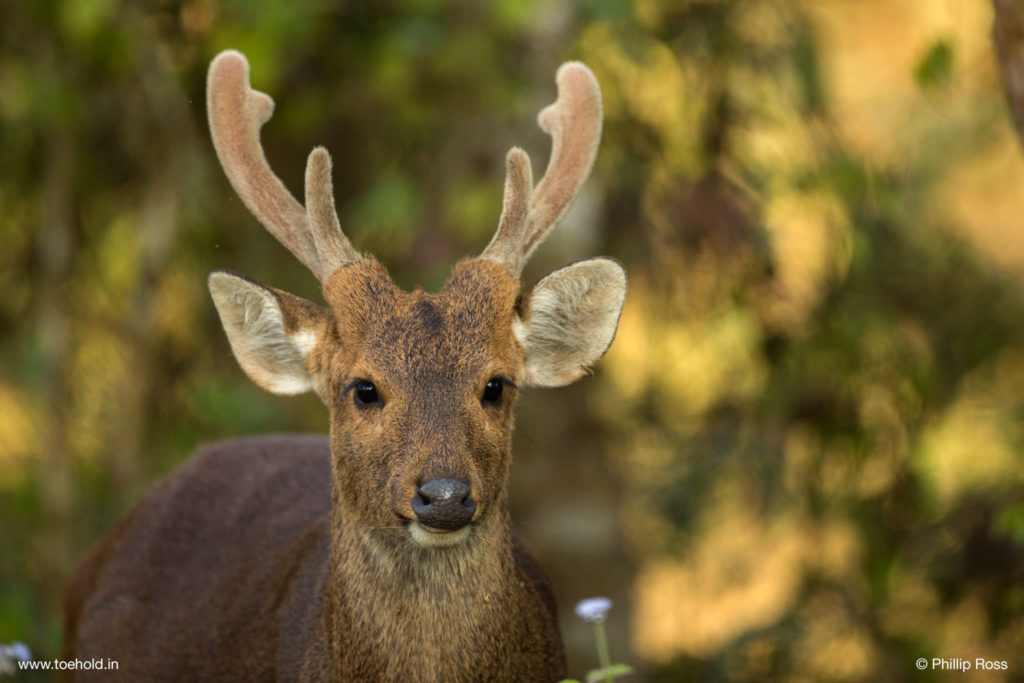
And as they were watching a male cross the vehicle track ahead of them, in the distance an animal infinitely larger in size and shorter on temper was crossing the road too.
The great one-horned rhinoceros, the pride and insignia of Kaziranga, came onto the road and gazed at them fleetingly before wandering off into the grass, a moment that Tour participant Madhur Behl captured beautifully:
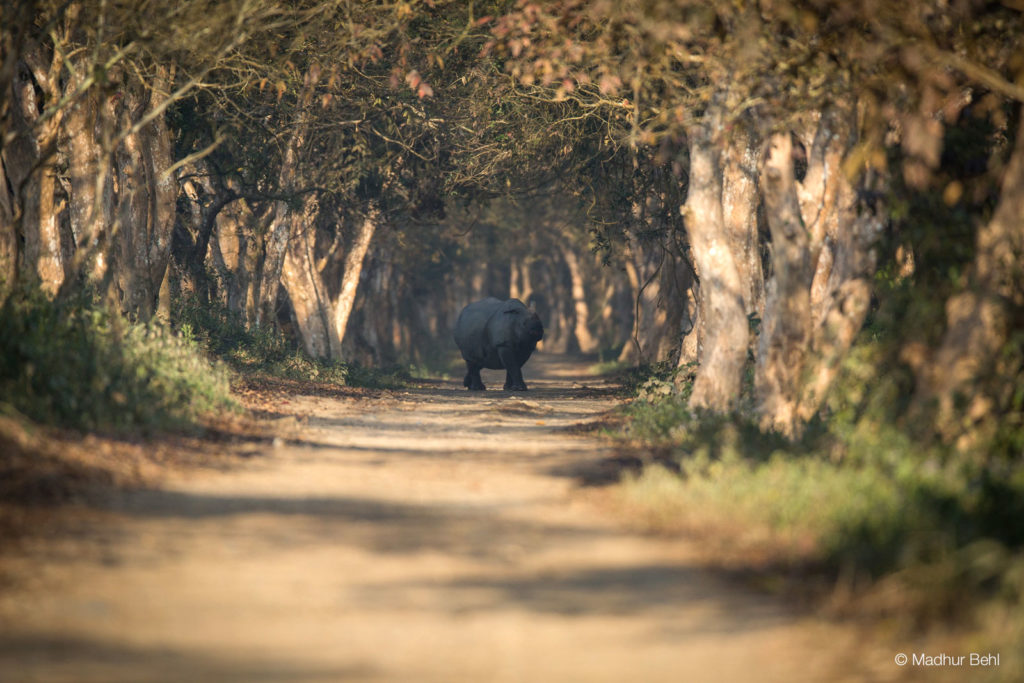
That was to be merely the first of many rhino encounters – some of them really close – on the group’s maiden safari in Kaziranga.
The park was full of opportunities to photograph other wildlife too, including several pelicans, otters, Alexandrine parakeets, Pallas’ fish eagles, a herd of elephants, bar-headed and greylag geese and small niltavas, topped by Indian and Oriental pied hornbills sitting in the same tree!
The participants’ excitement pretty much hit the roof when they even got to see the Assamese roofed turtle on the very first drive.
Says Sachin, “It was an amazing safari where everybody filled their cards; there was great variety in sightings, and this was a great start to the Kaziranga leg of the Tour.”
It decidedly sounds like it.
Next morning, they took the other mode by which Kaziranga may be explored – elephant back.
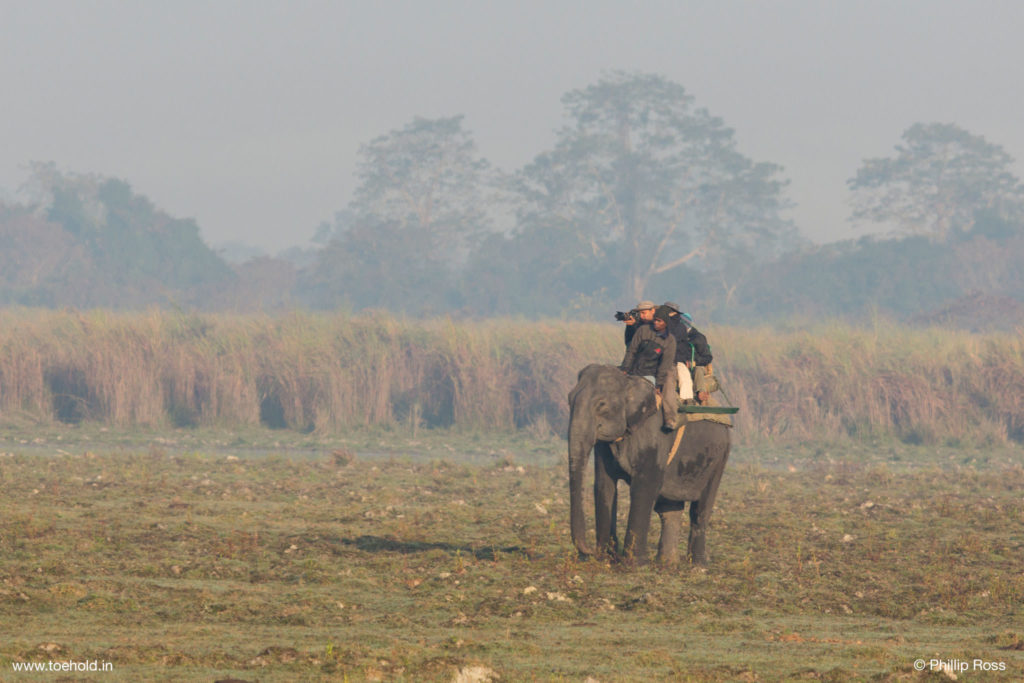
Commencing the elephant safari at the crack of dawn, two participants on each gentle giant entered the park and saw some not-so-gentle giants – rhinos – in the mist forthwith, which is the kind of splendid photographic opportunity Kaziranga National Park is famous for.
For the next hour and a half, they had a whale of a time, being afforded an intimate and periscopic view of the boudoirs of Kaziranga – the private corners of her bosom in which precious life resides.
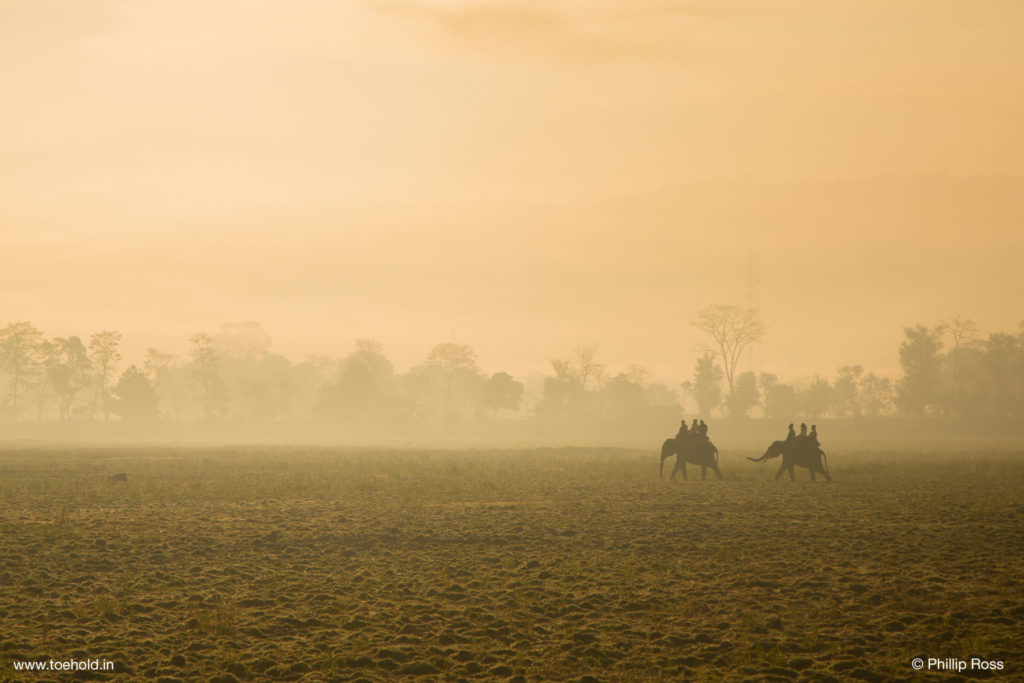
Said a participant, “Moving slowly through the elephant grass and getting really close to the swamp deer (soft-ground barasingha) was brilliant, and the rhino encounters were really good!” We have no reason to disbelieve her.
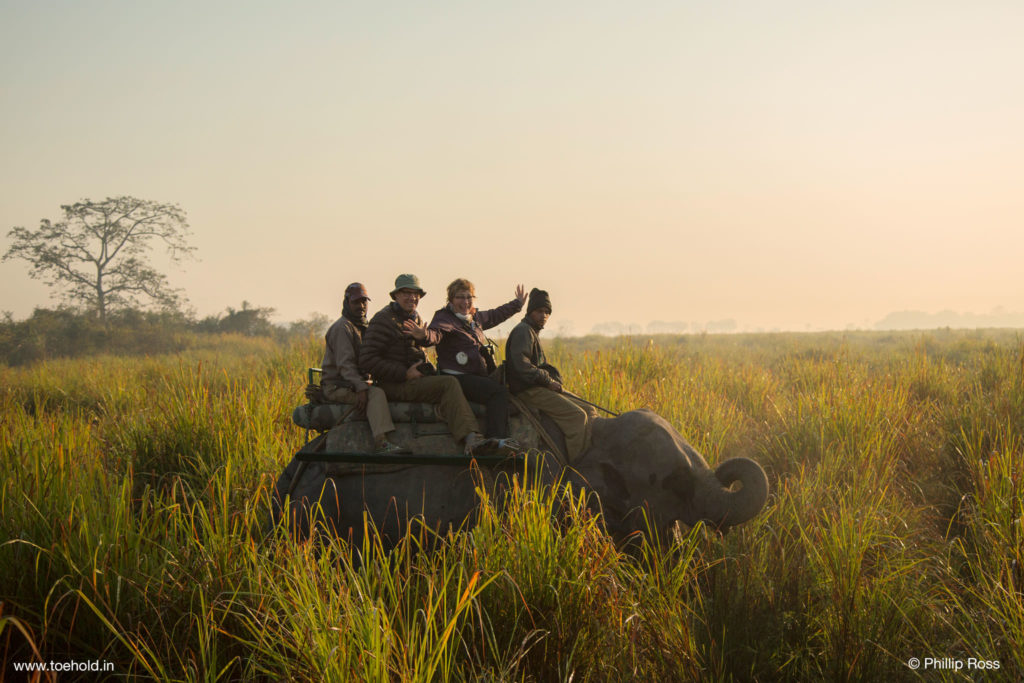
The remaining three safaris were similarly action-packed, as Sachin and Phillip led the participants on an exploration of this jewel of the Northeast. Every ride was punctuated with rhino and elephant sightings, and plenty of photo opportunities. Every hour was productive, and every soul delighted.
On the morning of 23 January, they gave all this surplus goodness a break and headed for the Hoollongapar Gibbon Sanctuary, the third destination on this photography expedition.
Named after the hoolong tree, a common species found in the area, this park has the unique distinction of being haven to seven different primates in the same park, including a healthy population of hoolock gibbons.
Enjoying a hearty breakfast at the gate, the group was welcomed by the sight of a Malayan giant squirrel, and as they resumed the walk, they enjoyed some good birding, espying large woodshrike, white-throated bulbul and some other species that are common here but not common elsewhere. Life was good.
And just then, it got better. The sound of a gibbon sent the group to an alert silence, and the next moment, someone had spotted him! The excitement pervasive through the participants seemed to have infected the subject of their pursuit, for the gibbon soon started swinging between trees and posed in the open for a round of terrific photographs.
Then they saw two more – a female and a young male, probably the couple’s son. They watched them for forty-five minutes as the female perched on an open branch, matching the male for panache.
Later, the male joined her, and they mated.
Their sexual union was brief, however, and was interrupted by the approach of the young gibbon.
Their fornication spurned, the couple dispersed into the canopy, and so did the group, who sauntered off in pursuit of more diverse primate pastures. Fortune favoured them and they came across a small troop of pig-tailed monkeys that posed for them just enough to elicit a round of beautiful shots before melting into obscurity.
The group then returned to Kaziranga for the remaining three safaris, which were exciting due to a combination of regular alarm calls and bird songs, with khaleej pheasant, grey-headed lapwing and jack snipe being some of the species they could add to their near-150-strong species list for the Tour.
By the final evening, they had visited all the three zones. “Each zone had its specialty,” beamed a participant. “The Eastern Range was fabulous for birding, mallard and wigeon being the highlights,” confirmed Phillip.
The final safari was in the middle of it all, the Central Zone. The group enjoyed a breakfast, as they had done so often before on the Tour, on the banks of the mighty Brahmaputra. The fearsome river was calm for now, quietly reflecting the azure sky. Deer grazed and birds chirped with the same sanguineness that prevailed in camp. Even the trees were still in the silent air…until in the distance a Pallas’ fish eagle cried.
It had called time on a great Tour. And the floodplains had ensured that its memories would come flooding back whenever the participants would think of the land of tea and plenty to see.

